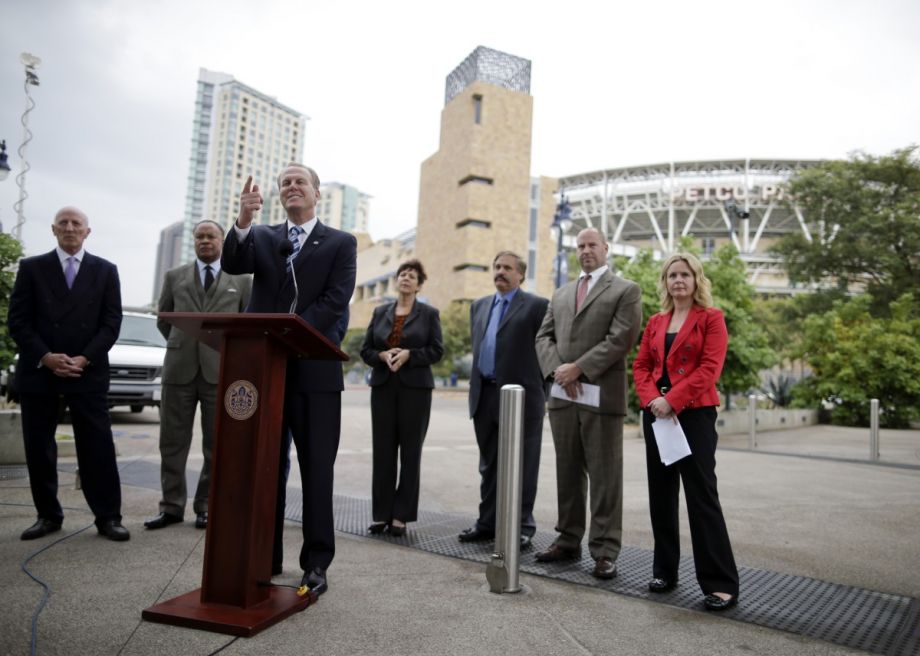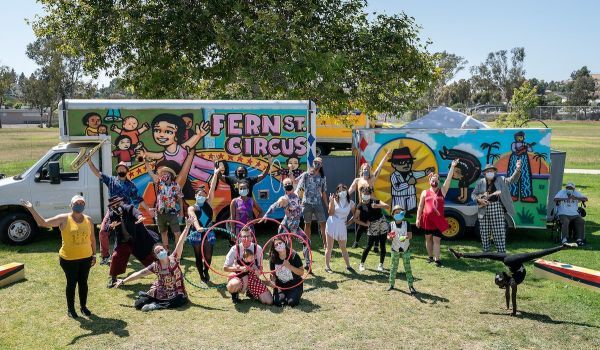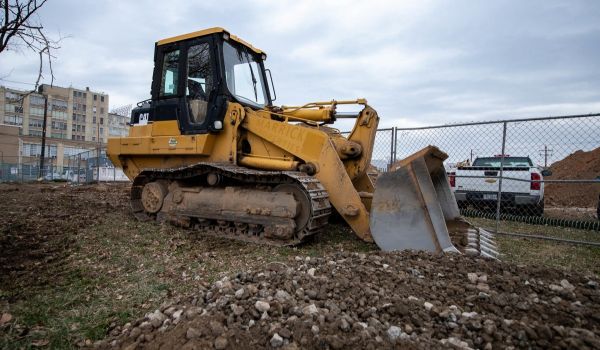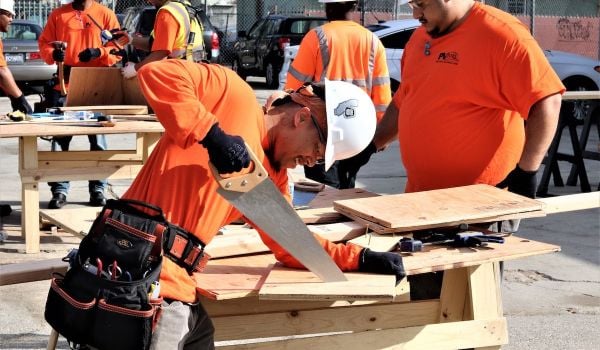Plans for a new convention center-stadium project in San Diego got a second wind this week, when Mayor Kevin Faulconer, who has been silent about the project since it was offered up to the public back in April, announced his support. The looming question is whether or not the city will join the small league of American municipalities that have decided to counter threats of gentrification and displacement by investing millions of dollars into neighborhoods at the heart of these mega-projects through nuanced community benefits agreements.
Faulconer’s support for the $1.8 billion “convadium,” where the San Diego Chargers would play, came as the NFL team agreed to certain concessions after negotiating with the mayor. The team has to promise it won’t make taxpayers foot the bill if the deal falls through and the team decides to move to Los Angeles — an idea it’s been courting for a while but made serious with moves for an “L.A. Chargers” trademark petition on January 14 of this year. The Chargers would also have to pay every extra dollar if the project goes over budget, and income from any non-NFL events held at the stadium or convention center go directly into the city’s pockets.
Residents still have to vote on the “convadium” on Nov. 8, but Faulconer’s support may just be the extra weight needed to push public opinion toward “yes.” Recently, the odds haven’t been in the team’s favor. An online YouGov poll at the end of August found only a quarter of respondents backed the project, while 52 percent opposed it.
Paired perfectly with Faulconer’s announcement is a new economic impact study that was carried out by researchers at USC and the University of San Diego — and backed by Chargers funds — that paints a rosy picture of the job opportunities and revenue that would flow into the city if such a convadium were built. The report was made public on Tuesday and forecasts 12,400 direct and 2,600 indirect construction jobs, a labor income increase of $800 million, and the city’s annual economic output growing by $2.1 billion.
“The convadium will result in thousands of new good-paying jobs for San Diegans, plus new apprenticeship training opportunities for community members to ‘earn while they learn,’” said Carol Kim, community coordinator for the pro-union trade group San Diego County Building and Construction Trades Council, in a statement at the Chargers’ website. “[They’ll] receive full family medical coverage, retirement benefits, and enter into a lifelong middle-class career without college debt. This is a clear boost to our economy and a benefit for our communities.”
One pointed criticism, which surrounding communities like Sherman Heights, Logan Heights and the traditionally Hispanic Barrio Logan have been brandishing since the project was announced this spring, is the lack of a clear treatise between the city and residents most likely to see costs of living rise because of the project’s anticipated impact on land values. Nowhere in the Chargers’ 119-page description of the convadium proposal is there anything more than vague attention given to this issue.
But in a letter dated August 9, Chargers owner Dean Spanos and Kim outlined the initial phases of what a community benefits agreement might look like (from the Chargers’ and unions’ perspectives, at least). It referenced, without promise, a reserved seat on the project’s joint powers authority for one elected citizen from any of the affected communities, a targeted hire program to make sure local workers got access to the apprenticeship programs feeding directly into the construction of the project, free parking permits and youth bus passes for local residents, and a community land trust that the Chargers would invest millions of dollars in, according to Kim.
As the convadium proposal gains steam, so too must local community groups’ push for a stake at the development table, and Joe Donlin, director of equitable development at L.A.-based Strategic Actions for a Just Economy, has some advice for them. (Some SAJE members were involved with discussions over the L.A. Live entertainment complex, and the resulting CBA that’s hailed as the first comprehensive one of its kind in the U.S.)
First, he says, make sure any dollars promised by the city or developer for affordable housing are based on estimated land values after the projects get completed. Second, make sure the coalition has robust legal support that can really position the demands of each of the community groups involved in the light of local and state laws.
Third, recognize that those big job numbers these developers love to promise may not start to materialize until years after the agreement gets signed. That’s why he thinks it’s important to make sure CBAs also spend some text requiring that the city and developers inject money into local, non-governmental workforce and social services centers to give them the capacity to train workers over the long term and give them the skills they need to advance up the career ladder. Leaving it up to developers and the city to take care of these workers, he says, means a lot of them will get left behind.
“There’s a lot of talk around how to do local and targeted hire with CBAs, but when it comes to the actual implementation, it often falls short,” he says. The only way to make sure workers from local communities are best equipped to meet the employment demands these projects have is to pair them with centers that have a rich understanding of the communities they come from, and the types of barriers to employment that are common among neighborhood residents. “We can’t just rely on big-scale workforce centers, who handle thousands of people at a time but never at a level that can support these candidates [from disadvantaged backgrounds].”
For example, SAJE is currently monitoring a CBA agreement with the University of Southern California over a $650 million campus expansion project, called USC Village, which aims to provide housing for an additional 2,700 students and build 100,000 square feet of retail space in South Los Angeles. The agreement, sanctioned by the city of Los Angeles, requires USC to invest $20 million into the city’s Affordable Housing Trust Fund, and another $300,000 into local workforce development programs. That region of the city has an unemployment rate of around 15 percent, but the project promises to provide 8,000 construction jobs and 4,000 permanent jobs by the time it’s finished.
One big hiccup SAJE has run into, though, is that workers with a felony record face the risk of being left out of hiring because of school policies that may deny someone with a criminal history from stepping onto campus. Then there are those developers Donlin has worked with in the past that have promised to hire from disadvantaged neighborhoods but later confess that candidates didn’t “fit the culture” of the jobs they were offering.
“We need to know what they’re looking for, but often the assumptions behind [those preferences] and ultimately who they end up hiring still creates a barrier for a lot of local folks from backgrounds of poverty or incarceration when it comes to getting these jobs,” he says.
Fifteen years later, the L.A. Live CBA is largely considered a success by Donlin and SAJE. Aside from the years between the agreement’s signing and the start of permanent and construction-based jobs for residents from the surrounding community, his advice comes from witnessing that CBA and current negotiations with USC. It can be condensed into one clear observation: San Diego community groups should start coalescing to hash out a community benefits program now, despite the fact that the stadium isn’t 100 percent guaranteed. If it gets to that 100 percent, it’s going to mean years of keeping developers and the city accountable for their promises, and there’s no better time to start preparing for that extended task than now.
The Equity Factor is made possible with the support of the Surdna Foundation.
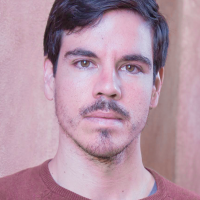
Johnny Magdaleno is a journalist, writer and photographer. His writing and photographs have been published by The Guardian, Al Jazeera, NPR, Newsweek, VICE News, the Huffington Post, the Christian Science Monitor and others. He was the 2016-2017 equitable cities fellow at Next City.


